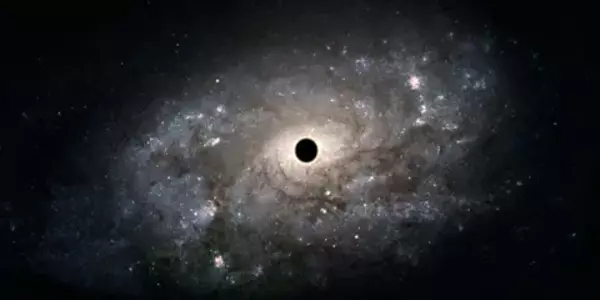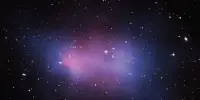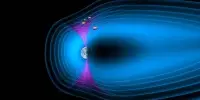Two supermassive black holes are on the verge of colliding, and a new model predicts that this might happen within the next three years rather than over cosmic periods, which would amaze astronomers. It would be incredibly insightful to watch such an occurrence because it would shed light on numerous aspects of black hole physics.
Since 2015, LIGO and Virgo have been observing gravitational waves coming from merging black holes (and neutron stars). However, those were tiny black holes with a mass comparable to massive stars. Instead, the emphasis in this work is on supermassive black holes. According to a study published in Astronomy & Astrophysics, two of them with a total mass of 200 million suns are thought to be inside galaxy J1430+2303. That is more than 45 times the mass of the supermassive black hole at the center of the Milky Way, Sagittarius A*.
Although modern observatories are unable to detect the gravitational waves produced by supermassive black hole collisions, such an event is anticipated to produce a significant amount of high-energy particles and light. The team believes that J1430+emissions 2303’s indicate that the merger is about to occur. The emission from the contact repeats more frequently, according to recent observations of the potential pair, and their model predicts that the collision will soon occur.
“An attentive examination of its optical light curves from the Zwicky Transient Facility (ZTF) then revealed distinctive chirping flares, with a duration decreased from around one year to only three months by the end of 2021. The flares can be best understood as plasma balls that an inspiraling secondary SMBH kicks out of the primary SMBH accretion disk at disk crossings. Multi-wavelength follow-up observations are both urgent and intriguing because we have created a trajectory model to describe the period evolution and anticipated that the binary will merge within three years, according to the authors of the paper.
Although the team claims that the binary supermassive black holes are the best candidate to explain the data, they have not yet discovered what they refer to as “the smoking gun” that would establish the existence of two black holes. This is the excited potassium and iron emission from the disk that surrounds the black hole. The radiation is observed, but the quality is insufficient to identify variations and establish that it originates from two black holes rather than one.
















